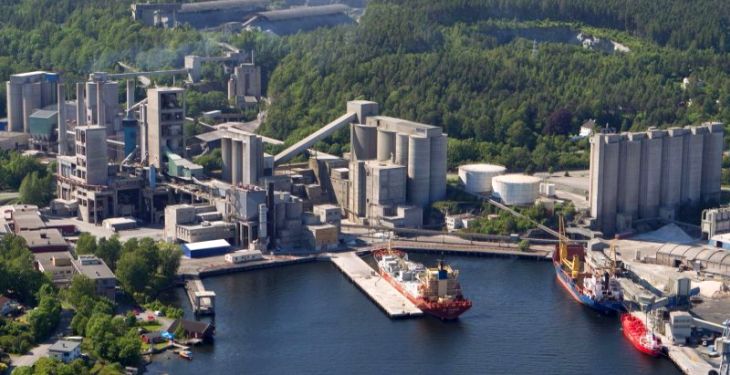Norway is getting closer to building the world’s first carbon-free cement plant, a move that could reverberate across the globe as 197 countries meet for the UN’s annual climate conference in Katowice, Poland.
Cement plants are not a pretty sight and the one located in Brevik, Southern Norway, is no exception. But inside the grey walls of its office buildings, employees are quietly planning a revolution that could have worldwide repercussions.
In 2013, the factory set out an ambitious goal: becoming the first zero-emission cement plant in the world. Various solutions have been tested since then, all of them using carbon capture and storage (CCS), a technology pioneered in Norway which involves catching CO2 emissions at source and injecting them underground.
The cement industry is the world’s second largest industrial emitter of CO2 after steel, accounting from more than 6% of global emissions, according to CDP, a non-profit group based in the UK. If the European cement sector were a country, it would emit as much CO2 as Belgium, according to Euractiv.com.
“Cement is a conservative industry,” says Per Brevik, in charge of sustainability at the Norcem plant, owned by German multinational HeidelbergCement. When he announced his CCS plans, Brevik said he received panicked phone calls from Germany. “They told me ‘you are crazy, you can’t do this, it’s too aggressive’,” he recalls.
Since then, CCS has climbed up the priority list at HeidelbergCement. From a mere bullet point in 2013, it grew up to take a full page at the company’s 2016 general assembly. “In 2017, it was three pages, and among the top five priorities for HeidelbergCement,” Brevik proudly says.
Preparations are now well underway. Norcem Brevik is already among the leading cement plants in Europe when it comes to using alternative fuels coming from waste. The plant has already managed to substitute 70% of its fuel use with waste-based alternatives, such as paper, textiles, and plastics, as well as hazardous waste. Altogether, these have the potential to address around one-third of the plant’s total CO2 emissions.
But the CCS installation is the crown jewel that could make the plant 100% carbon-free. Indeed, the remaining two-thirds of cement emissions come from the process of decomposing limestone to produce clinker, which is then ground with gypsum and fly ash to obtain cement.
That process requires large amounts of heat and releases CO2 in the form of flue gas. And the whole process is CO2-intensive. “For each tonne of clinker, we produce half a tonne of CO2,” Brevik explains.
The problem is that those emissions cannot be avoided using renewable energy: CO2 will be emitted regardless of the energy used to heat the limestone. “We need carbon capture and storage to meet our goal,” Brevik told a group of journalists invited to visit the plant in October this year.
